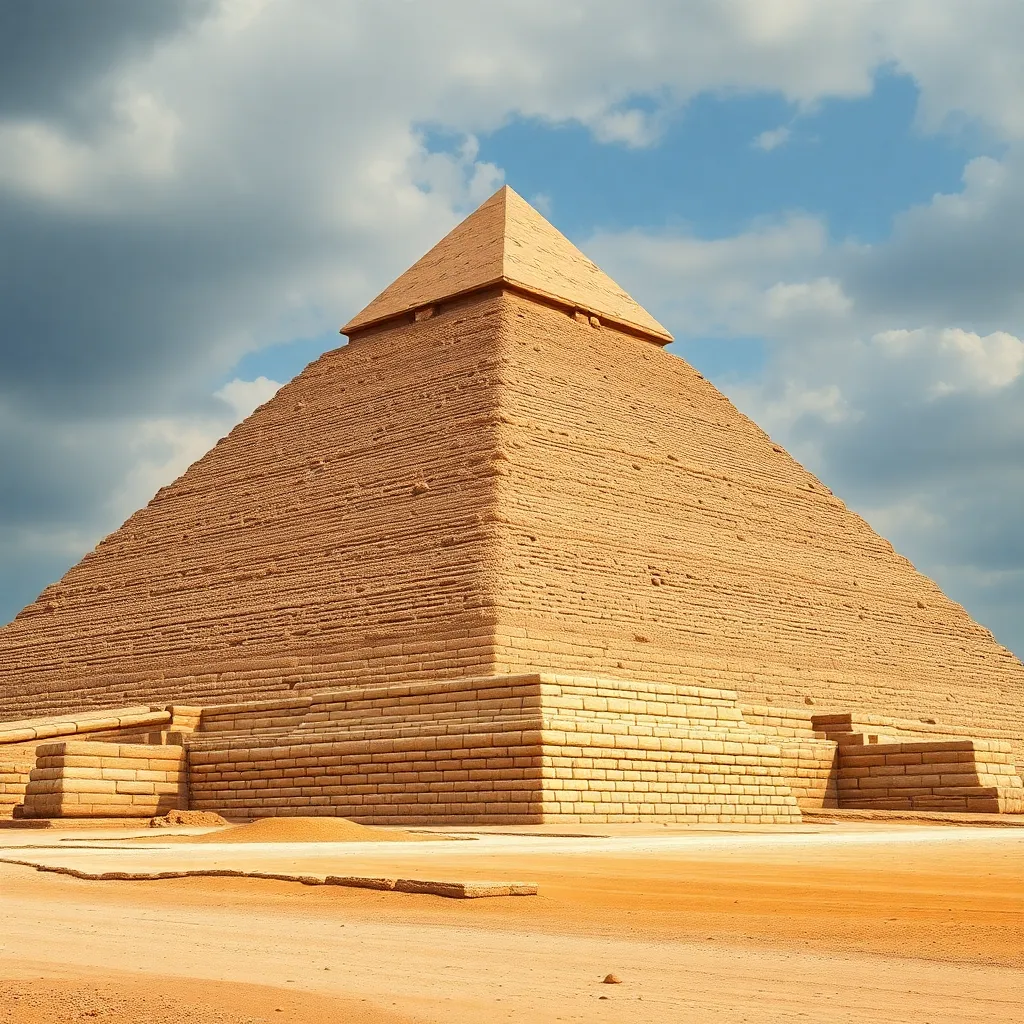The Great Pyramid: An Architectural Marvel
I. Introduction
The Great Pyramid of Giza, one of the most iconic structures in the world, stands as a testament to the architectural prowess of ancient civilizations. Built as a tomb for Pharaoh Khufu, it not only reflects the extraordinary skills of its builders but also serves as a significant cultural symbol of ancient Egypt. The importance of architectural achievements in ancient civilizations can hardly be overstated, as they provide insights into the technological advancements, religious beliefs, and social structures of the time. This article aims to explore the historical context, architectural design, engineering innovations, cultural significance, and ongoing preservation efforts related to the Great Pyramid.
II. Historical Context
The Great Pyramid was constructed during the Old Kingdom of Ancient Egypt, a period known for its remarkable advancements in art, architecture, and governance. This era, which lasted from around 2686 to 2181 BCE, was marked by the establishment of a centralized state and the development of monumental architecture.
Pharaoh Khufu, also known as Cheops, reigned during the Fourth Dynasty and is credited with commissioning the Great Pyramid. His desire to create a grand tomb reflects the Egyptian belief in the afterlife and the importance of the pharaoh’s role in maintaining cosmic order. The Great Pyramid served not only as a burial place but also as a means to ensure Khufu’s immortality and divine status.
III. Architectural Design and Structure
The Great Pyramid is the largest of the three pyramids on the Giza plateau and was originally 146.6 meters (481 feet) tall, though it now stands at 138.8 meters (455 feet) due to the loss of the outer casing stones. Its base covers an area of 13 acres, making it the largest pyramid ever built.
The construction techniques employed in building the pyramid continue to intrigue historians and archaeologists. The core of the pyramid was made from limestone blocks, while the outer casing was originally covered in highly polished Tura limestone, giving it a brilliant white appearance that would reflect the sun’s light.
Key Features:
- Base Length: Approximately 230.4 meters (756 feet)
- Estimated Weight: 6 million tons
- Number of Blocks: Estimated 2.3 million blocks
IV. Innovations in Engineering
The construction of the Great Pyramid required advanced engineering skills and innovative techniques. Ancient Egyptians developed sophisticated methods for surveying and planning the layout of the pyramid. This included the use of simple tools like ropes and plumb bobs to ensure precise measurements.
One of the most remarkable engineering innovations was the use of ramps for transporting the massive stone blocks. There are several theories regarding the types of ramps used, including straight, zigzagging, and circular ramps, which allowed workers to move stones to higher levels as the pyramid was constructed.
Additionally, the Great Pyramid is aligned with incredible precision to the cardinal points—North, South, East, and West. This alignment demonstrates the Egyptians’ advanced understanding of astronomy and their ability to incorporate it into their architectural designs.
V. Cultural and Historical Significance
The Great Pyramid holds immense cultural and historical significance, deeply intertwined with Egyptian religion and mythology. It was believed that the pyramid served as a staircase for the pharaoh’s soul to ascend to the heavens and join the gods. The pyramid’s design reflects the Egyptians’ belief in the afterlife, where the dead would be judged and granted eternal life.
Furthermore, the Great Pyramid has influenced countless architectural designs and structures throughout history. Its monumental scale and geometric precision have inspired architects and builders across the globe, serving as a symbol of human ingenuity and ambition.
In modern culture, the Great Pyramid continues to captivate the imagination of people worldwide. It has appeared in literature, films, and art, reinforcing its status as one of the Seven Wonders of the Ancient World.
VI. Theories and Controversies
Despite extensive research, many debates and controversies surround the construction of the Great Pyramid. Scholars have proposed various theories regarding the methods used, highlighting the challenges faced by the laborers and the organization of the workforce.
Some theories suggest that the workforce consisted of skilled laborers who were well-fed and housed near the construction site, while others argue that the laborers were conscripted peasants working under harsh conditions. Additionally, alternative hypotheses regarding the pyramid’s purpose, such as being a monument for astronomical observations or a repository of knowledge, continue to spark interest and speculation.
VII. Preservation and Tourism
The Great Pyramid has endured for over 4,500 years, but it faces several challenges related to preservation. Efforts to conserve the site include restoring the remaining casing stones, controlling erosion, and managing the impact of tourism.
The influx of tourists can both benefit and threaten the site. While tourism generates revenue for conservation efforts, it also poses risks such as vandalism and environmental degradation. Balancing the need for preservation with the desire to share this historical marvel with the world is a continuing challenge.
VIII. Conclusion
In summary, the Great Pyramid of Giza stands as a monumental achievement in architecture and engineering, reflecting the sophistication of ancient Egyptian civilization. Its enduring legacy serves as a reminder of the remarkable accomplishments of our ancestors and the importance of preserving such historical structures for future generations.
As we continue to study and appreciate the architectural achievements of the past, the Great Pyramid remains a symbol of human creativity, ambition, and the quest for immortality. It is essential that we recognize and protect this incredible artifact, ensuring that it continues to inspire and educate for many years to come.




